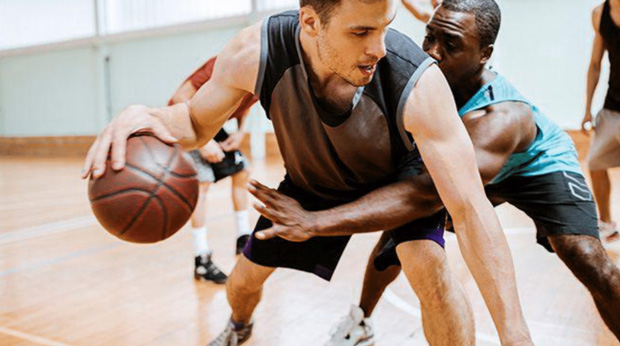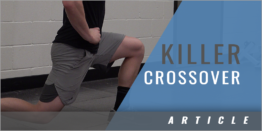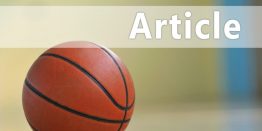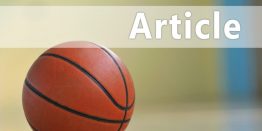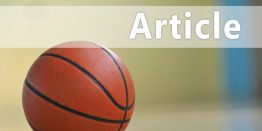| The Benefits of Practicing with a Weighted Basketball |
| By: Kyle Scadlock
Provided by: STACK A weighted basketball, sometimes called a heavy ball, is a basketball that is regulation size (29.50 inches in circumference) but weighs 3 pounds instead of the normal 22 ounces. The weighted ball is strictly a training tool and can be very beneficial to improving your game, but it should only be used for developing certain skills. The increased weight of the ball will strengthen your fingers, wrists and forearms but the ball should only be used for practicing ball handling and passing when you are working out. In theory the weighted ball could be used for shooting, to improve range and maybe your ability to hit shots off balance as it will strengthen the upper-body muscles you use to shoot. However, alternating between shooting with a weighted ball and a regulation ball will require continuous adjustment and lead to inaccuracy and lower quality reps. Using the weighted ball also could alter and hurt your shooting form by forcing you to overcompensate for the weight of the ball in order to get the ball to the rim instead of shooting it properly. Ball Handling
I have personally used the weighted basketball in my training and have had a very positive experience with it, especially as far as ball handling. The ball bounces and reacts the same as a regulation ball but the 3 pounds really require you to dribble the ball harder and snap it down when making moves. When you switch back to using a regulation ball you immediately feel the difference in the quickness of your moves but you are also forced to control what is now a relatively much lighter ball. This initial feeling will go away as you adjust back to the feel of the regular ball. Dribbling with the heavy ball will strengthen your arms, giving you a more powerful dribble and a tighter handle. This is important because the harder and faster you can dribble the ball the quicker you can do anything with the ball in your hands. Think about it: If it takes you a second to cross the ball over from your right hand to your left, it takes you a second to pass to an open teammate, pull up for a shot, or make a counter move. So the harder you can dribble the ball the quicker you can make decisions and plays on the court. Passing As far as passing, the heavy ball can make you stronger and thus able to make longer and faster passes more accurately. The heavy ball has helped me the most in developing my single-handed passing with my off hand. Using the heavy ball to make passes with my left hand has made me more comfortable doing so in games and has helped me get passes off quicker by being able to quickly transition from dribble to pass without having to involve my right hand. Here are a couple drills you can do with a weighted basketball to improve your ball handling and passing: Walking Dribble Combinations How to: • Begin on the baseline with a basketball in your hand. • Determine a combination of moves to work on for each repetition of the drill (e.g., crossover, between the legs, behind the back, double behind the back, etc.) • Complete one round of the chosen series while stationary with wide feet and bent knees on the baseline • After the completion of the first round, walk your feet forward, taking steps at a controlled pace with each move while maintaining the low, wide stance. • Move from the baseline to half court and back. Repeat 8-10 times using different combinations each time Stationary Dribble Combination Passing How to: • Begin in an athletic stance about 10 feet away from a partner. Each of you should have a ball. (If you are alone you can perform the drill using a wall.) • You will perform a combination of three dribble moves (e.g., crossover, between the legs, behind the back) so that the ball ends up in the opposite hand from which it started. • If you are working with a partner you should both perform the same moves in the same order so the timing of your passes lines up. • Once you have completed the series of moves, make a single handed pass to your partner's free hand and then catch your partner's pass and begin another sequence of three moves. (If you are using a wall just pass it against the wall, catch your pass and then continue.) • Repeat until you have made 10 passes with each hand. |



